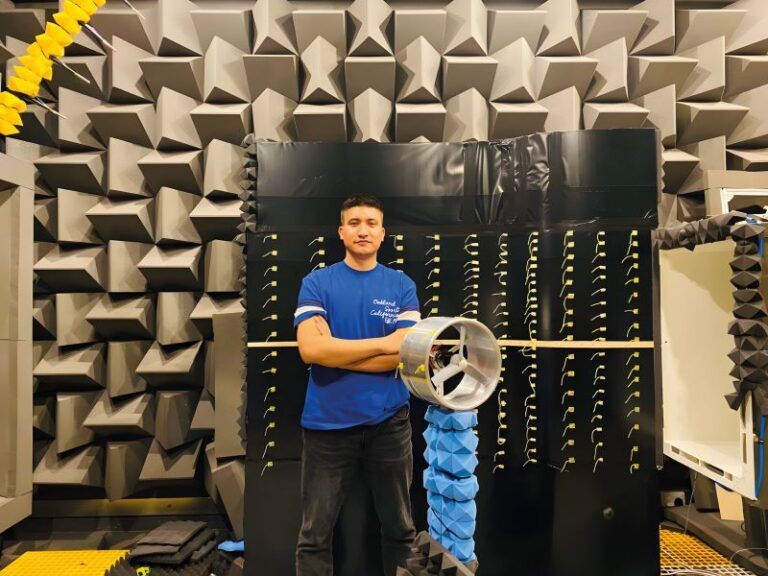Electric ducted fan propulsion systems are gaining significant attention for their potential to help power next generation aircraft toward NetZero emissions. These systems are typically mounted in two ways, away from the airframe, or close to or embedded within the airframe.
The latter are known as boundary layer ingesting (BLI) ducted fans and operate adjacent to the fuselage or wing, ingesting the boundary layer flow. This technology is integral to several future aircraft, such as ONERA’s NOVA, the NASA/MIT Aurora D8, Airbus’ Nautilus and the Lilium Jet.
Our first-of-its-kind study at the University of Bristol’s National Aeroacoustic Wind Tunnel Facility revealed the fundamental mechanisms of noise generation, propagation, and perception from these BLI ducted fans. We dissected the noise using a source decomposition method into components including fan and duct aeroacoustics and airframe boundary layer flow interactions. The approach provides a clear understanding of the underlying physics of noise origin and variation with different thrust levels of BLI ducted fans.
The researchers designed BLI test rigs featuring an electric ducted fan mounted next to a curved S-plate wall, replicating the setup of embedded engines seen in designs like ONERA’s NOVA. This enabled an analysis of how noise sources interact within the system.
We implemented the source decomposition method by dissecting the BLI test rig into four configurations: isolated duct without the S-plate and installed duct with the S-plate to characterize duct aeroacoustics, and isolated ducted fan without the S-plate and installed ducted fan with the S-plate, to characterize ducted fan aeroacoustics. This categorization was crucial in determining how noise profiles change with varying thrust levels.
We used hot-wire probes and pressure sensors to measure flow development, load cells for fan thrust output, and microphones for noise quantification. The findings indicated a correlation between thrust levels and noise patterns. At high thrust, the noise resembles that of non-ducted fans, while at lower thrust levels, the duct contributes significantly to noise modification, affecting the typical haystacking phenomenon observed in the noise signatures of open propellers and fans.
The source separation strategy also helped to understand how humans perceive noise from embedded ducted fans, based on integrated aeroacoustics- psychoacoustics assessments. These showed that BLI ducted fans affected the perception of noise, correlating with the interaction between the turbulent boundary layer and the ducted fan.
Optimizing fan design for operation in boundary layer flows presents a unique challenge. The next steps involve gaining a deeper understanding of how ducted fans at different thrust levels alter the flow characteristics of the boundary layer. This study and the source decomposition approach are expected to provide valuable insights for addressing the fan design challenge in future BLI research.
Understanding the noise mechanisms in BLI ducted fans is also critical for developing quieter aircraft. With increasing demand for silent aircraft to enhance flight experience with minimal environmental impact, this research could help shape strategies to reduce noise emissions in the aviation sector.
The results of the testing were published in and can be read in more detail in the Journal of Fluid Mechanics.





